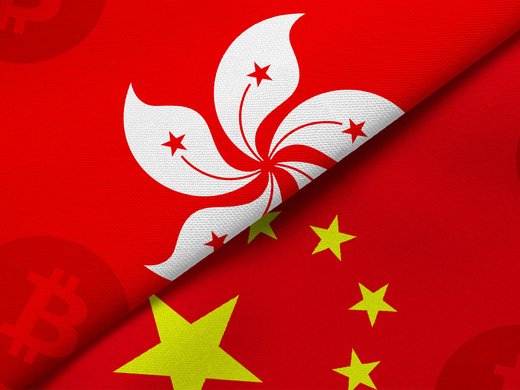In April, members of Canada’s parliamentary press corps thought they had uncovered some shenanigans over -- of all things -- the fiscal multiplier.
The Parliamentary Budget Officer (PBO), who provides nonpartisan analysis of the the government’s finances and economic projections, had criticized Finance Minister Bill Morneau’s outlook for economic growth. The PBO said Morneau was using favourable maths to calculate the economic impact of his stimulus program and that a smaller fiscal multiplier would be more realistic. A mini-scandal arose when the central bank used the Finance Department’s calculations in its own forecast. Some reporters sensed collusion. At a press conference in Ottawa, a reporter suggested Bank of Canada Governor Stephen Poloz might be covering for his “boss.” The governor reacted angrily. “The finance minister, I’m sorry, is not my boss,” he snapped. “The Bank of Canada is a fully independent policy maker.”
Canada’s central bank has enjoyed operational independence for five decades. Governors appear to have been mostly left alone to keep inflation under control as they saw fit. But how truly free is the governor to operate as he or (someday) she sees fit? The appointment process is conducted almost entirely behind the scenes, making it difficult to know if the government chose the best candidate. The Bank of Canada Act lays out a procedure for hiring a governor that is as rigorous as any a private financial institution would use. By the letter of the law, politicians have no input until the very end; the independent members of Bank of Canada’s board of directors are empowered to make the appointment, subject to cabinet’s approval. To be sure, few thought it actually worked that way and Poloz’s hiring proved that suspicion true.
When Mark Carney, Poloz’s predecessor, announced in 20102 that he had accepted an offer to lead the Bank of England, the Bank of Canada emphasized that it would be in charge of finding Carney’s replacement. “Governors of the Bank of Canada are appointed by the independent directors, subject to the approval of the minister of finance and the federal cabinet,” the Bank of Canada said in a statement. The political authority saw it slightly differently. “Governors of the Bank of Canada are recommended by the independent directors, and appointed by the Minister of Finance and the federal cabinet,” the Finance Department said in a separate statement (emphasis added). Jim Flaherty, the finance minister, took the unusual step of interviewing the short list of candidates, a subversion of the process that he nonetheless chose to make public. There was no mention of the finance minister’s involvement in the letter lead director David Laidley wrote to Flaherty on May 2, 2013 to announce that members of a special committee of the Bank of Canada’s board of directors had, “deliberated and come to their decision to appoint Mr. Poloz.” The government wanted no part of this fiction. The title of the Finance Department’s press release read: “The Harper Government appoints Stephen Poloz governor of the Bank of Canada.” (Emphasis added.) That is not how the Bank of Canada described it, stating in its own press release that the board had made the decision to appoint Poloz. Settling the matter, Harper summoned Poloz to his office for a photo-op on the day of the announcement. Why? Because he was the boss.
Does any of this matter? Maybe not. The Economist’s “Free Exchange” column argued in the Aug. 6 issue that ultra-low and negative interest rates may herald the end of the “autonomous central banker.” But for now, the idea of an independent central bank remains a pillar of monetary policy in most major economies. Yet for the most part, central bankers are foisted on their publics like any other patronage appointment. Harper and Flaherty overtly politicized the selection process, leading to suggestions they chose Poloz at least in part because everyone else thought Tiff Macklem, the No. 2 at the Bank of Canada, was the obvious choice. “When something with this government is inevitable, this government will sometimes go out of its way to say, ‘Screw all you guys who believe in inevitability,’” Jim Dinning, a former Conservative cabinet minister in Harper’s political base of Alberta, told me a few months after Poloz's appointment. “There are layers, upon layers, upon layers of why things happen, but I would say that there was just a sliver of a layer of that [contrariness] that was to Steve’s benefit.”
Harper and Flaherty also allowed the search to drag for months, creating the impression they were unserious about installing a new governor. Something similar is currently happening in India. When Reserve Bank of India Governor Raghuram Rajan revealed near the end of June that he wouldn't seek a second term, the government of Prime Minister Narendra Modi promised it would soon name a replacement. Rajan oversaw his final rate decision on Aug. 9 without a successor being named. The delay is a mystery. The government has said almost nothing about how its method for finding a new governor. Given Rajan’s unpopularity with elements of India’s ruling party, the secrecy ensures that whoever gets the job will be perceived as a supplicant until he or she proves otherwise. A more transparent selection process would have dulled those perceptions. It also would have quieted speculation of a different sort: that no one of quality wants the job.
The American approach of forcing each Federal Reserve Board nominee to win a vote in the Senate is probably too democratic for most parliamentary systems. The convention of party discipline would make a vote at Canada’s Finance Committee, for example, redundant. But Canada’s new government may have discovered a third way, although few appear to have realized it.
On Aug. 2, Trudeau announced a new procedure for filling vacancies at the Supreme Court. A panel of legal experts will receive applications and prepare a shortlist of three to five candidates. The justice minister will take that list and consult with the chief justice, members of the House of Commons Justice Committee and relevant provincial attorneys general. The minister then will make recommendations to the prime minister, who will make the final choice. The justice minister and the head of the search committee will appear before the House Justice Committee to answer questions about the nominee, and the nominee will appear at a moderated question-and-answer session with relevant members of Parliament. In the event that the new justice was found wanting at this stage, the prime minister would presumably be in a position to retract the nomination.
Trudeau’s template is a fine balance between accountability, transparency and executive privilege. He should apply it to the Bank of Canada when Poloz’s seven-year term ends in 2020. There are similarities with how the governor of the Bank of Canada currently is chosen. Anyone can now apply to be a Supreme Court judge, just as anyone can apply to be the head of the Bank of Canada. (The central bank advertises the job in major business publications and hires a headhunter.) A subcommittee of the independent members of board of directors comes up with a shortlist, although the Globe and Mail questioned in 2013 whether the Bank of Canada's directors were qualified to choose a governor. The 12 independent members are distinguished people, but none have any obvious expertise in monetary policy.
Absent from the procedure for choosing a Bank of Canada governor is any attempt at transparency and accountability. Members of Parliament have complained about being cut out of the process of choosing a justice; they have no say whatsoever in who leads the central bank. That probably is because the Supreme Court was seen to have more direct influence over the lives of most citizens. The rise of the central banker since the financial crisis shows the men and women in those positions also wield a degree of influence that rivals that of senior judges. Trudeau has figured out a way to ensure the public can be confident in the independence of Supreme Court justices. In so doing, he has a template to do the same for the central bank.


